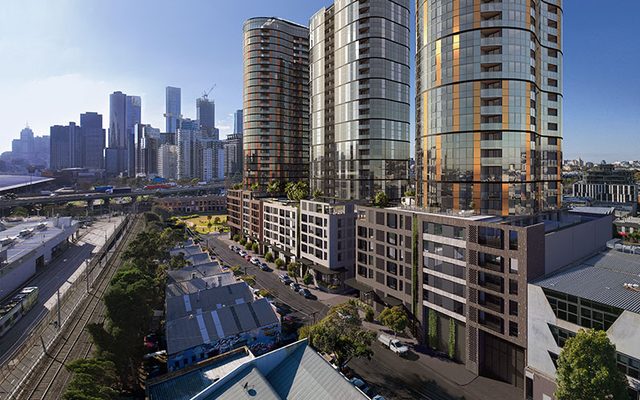This article is from the Australian Property Journal archive
INDUSTRY groups have welcomed the Labor government’s plans to introduce tax breaks for build-to-rent developers, which could turbo-charge the nascent sector and help deliver housing supply amid a national rental crisis.
After years of industry pressure, Prime Minister Anthony Albanese announced after National Cabinet on Friday that Labor will reduce the withholding tax rate for eligible fund payments from managed investment trusts (MIT) to foreign residents on income from newly constructed residential build-to-rent properties after 1st July 2024 from 30% to 15%.
A recent study by EY, commissioned by the Property Council, showed levelling the withholding tax rate, in line with investment in other property asset classes, could create an extra 150,000 homes over the next decade.
Labor will also increase the depreciation rate from 2.5% to 4% per year for eligible new build-to-rent projects where construction commences after 9th May, when the budget is handed down.
MIT on build-to-rent has been seen as a major obstacle in trying to attract institutional funds needed to develop projects.
“This is a landmark decision by government that will be critical to unlocking the at-scale housing supply Australia needs to combat our affordability crisis and gives build-to-rent a chance to be a viable solution for our housing supply crisis,” said UDIA president Maxwell Shifman.
Property Council chief executive Mike Zorbas said the move will “breathe life into this vital asset class, unlocking desperately needed supply through a new form of housing”.
“Build-to-rent housing, like purpose-built student accommodation and retirement living, is a positive part of the national housing equation and provides tenants with long-term security of tenure, superior amenities and professionally managed properties,” he said.
Australia is suffering under the strain of a national rental crisis. Housing vacancy rates across Australia’s capital cities are at a record low amid a chronic undersupply of properties, and the market is set to come under further demand pressures with accelerated rental increases as record migration levels continue into the next financial year.
“Measures to make the housing industry a more attractive place to invest is welcome at a time when communities are crying out for more supply,” said Master Builders CEO Denita Wawn.
“We are seeing rental inflation accelerate to its fastest pace since 2012 brought on by shortages in land supply and exacerbated by rising interest rates.
“For many builders and developers, initiating large-scale home building projects in the current environment is simply too risky as medium to high density is most sensitive to interest rate fluctuations.”
State governments across the eastern seaboard have been introducing tax concessions for build-to-rent projects.
According to Savills, around 40,000 apartments are either completed or in the build-to-rent pipeline. The number of institutional funds targeting Australian residential property has grown significantly over the past 18 months, and the amount of institutional capital already raised, allocated or in process of being raised for build-to-rent is currently in excess of $15.85 billion.
Mirvac has led the charge locally among institutional players, whilst major investments from foreign players have come from US giant Greystar, Singapore’s sovereign wealth fund GIC, and US real estate investment and development firm Sentinel and Dutch pension fund manager PGGM, who last year announced $1.5 billion partnership to develop and manage communities across Australia.
In its quarterly update, Mirvac said it is establishing a new build-to-rent rent venture with two “aligned long-term capital partners”. Financial close is expected in the June quarter, with Mirvac retaining about 45% of the venture. It also said it has achieved strong leasing at its recently opened LIV Munro project overlooking Melbourne’s Queen Victoria Market, which is now 54% leased, having sat at 32% in the first half, as well as price escalation. Its LIV Indigo project at Sydney’s Olympic Park is stabilised at 96% occupancy with 7.4% net effective rental growth.
Build-to-rent is now 6% of Mirvac’s investment portfolio and it has a $700 million of assets under construction.
Further $2bn boost for housing, boost for renters’ rights
Albanese also announced the government would support an additional $2 billion for more social and affordable rental housing in next month’s budget, increasing the NHFIC’s liability cap from $5.5 billion to $7.5 billion from 1st July, which it said would enable NHFIC to support more social and affordable rental homes by providing lower cost and longer-term finance to community housing providers.
Meanwhile, limits on rent both the size and frequency of rent increases could be part of a national strategy to strengthen renters’ rights. Albanese said different states would have different circumstances, but added that there was an agreement on “a range of measures that will be considered by state and territory governments to strengthen the system of renters’ rights”.




